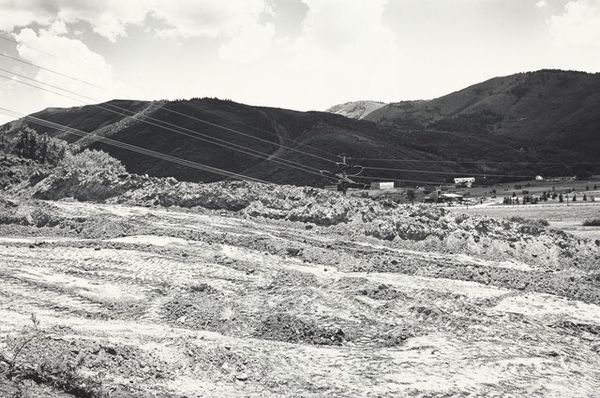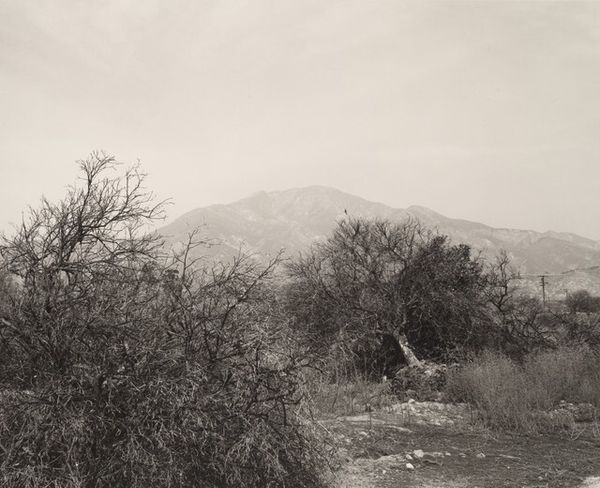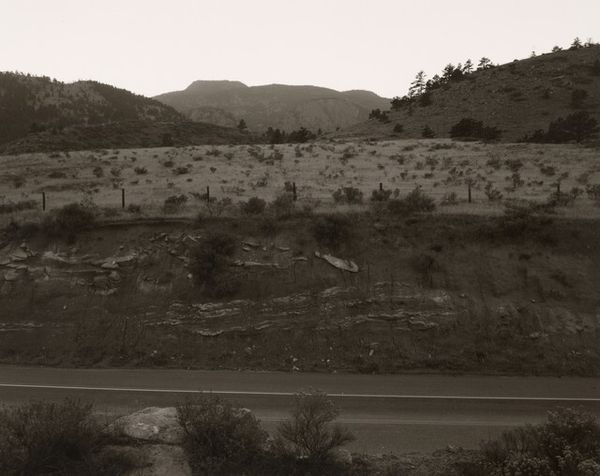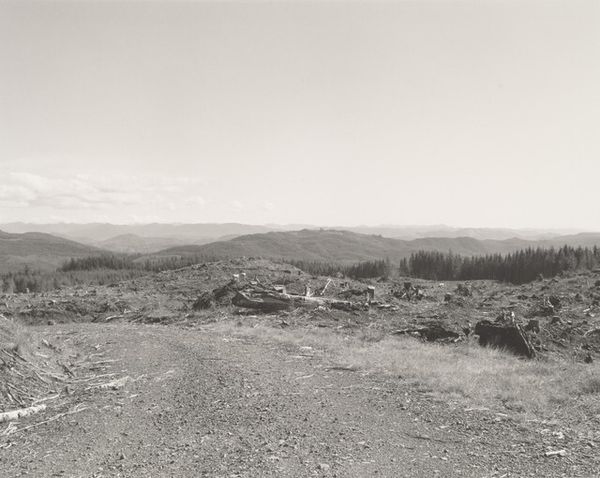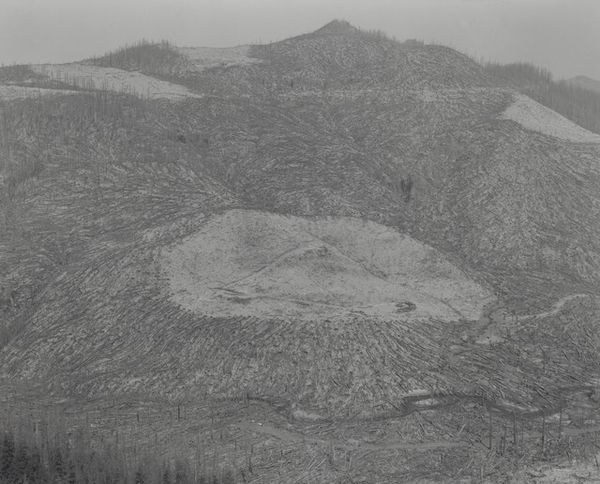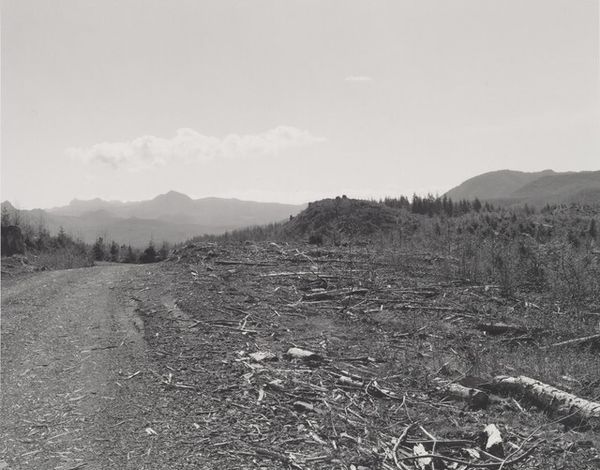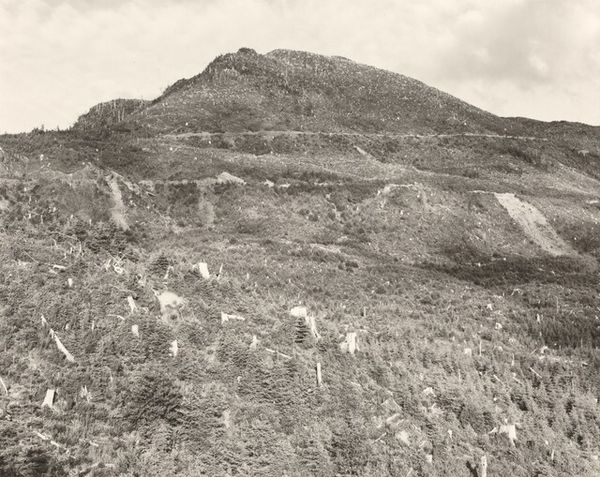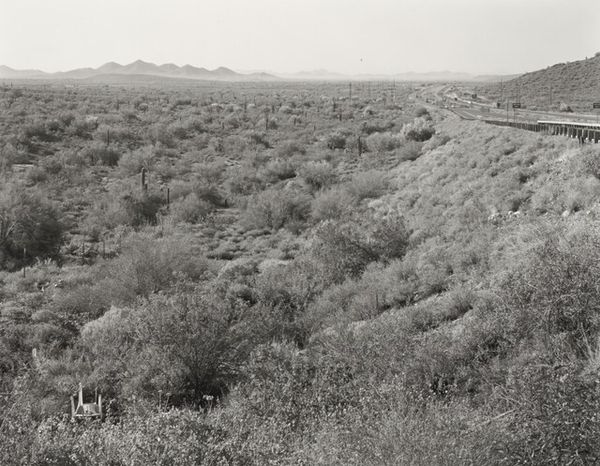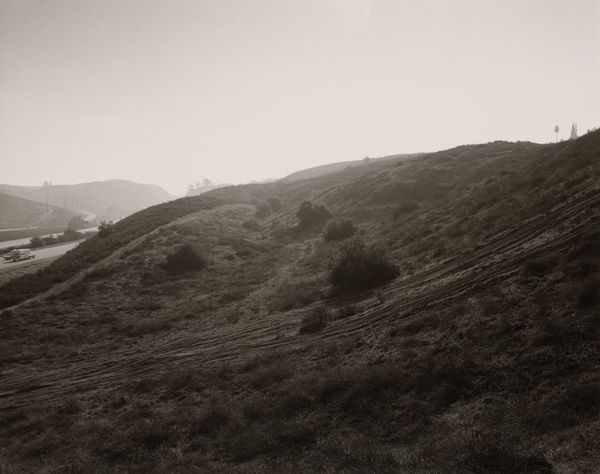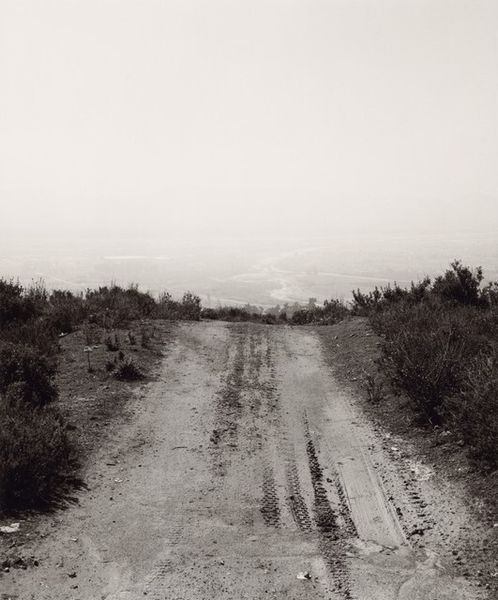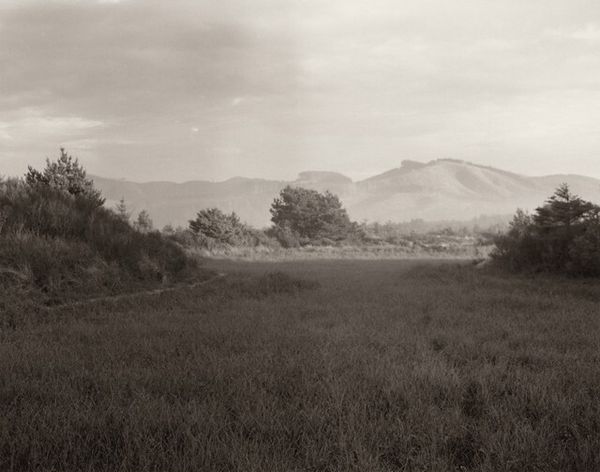
#
cloudy
#
black and white photography
#
snowscape
#
countryside
#
warm monochrome
#
outdoor scenery
#
low atmospheric-weather contrast
#
monochrome photography
#
outdoor activity
#
shadow overcast
Dimensions: image (and sheet): 22.6 × 28.3 cm (8 7/8 × 11 1/8 in.) mount: 35.4 × 39.4 cm (13 15/16 × 15 1/2 in.)
Copyright: National Gallery of Art: CC0 1.0
Curator: This is Robert Adams's photograph, "Above Interstate 10, east edge of Redlands, California," taken in 1982. Editor: It's strikingly bleak. The monochrome palette emphasizes the scars etched into the landscape. There’s an undeniable sense of loss pervading it, almost like looking at a wounded animal. Curator: Adams' work often deals with the transformation of the American West and the impact of human intervention. Those lines crisscrossing the hills—they're roads, or perhaps the beginnings of construction sites. Editor: Right. The marks of industry, or pre-industry, perhaps. It makes me think about labor, the physical effort involved in reshaping land, the promises embedded and often broken in such undertakings. What did they use to carve these hills? What were their motivations? Curator: Considering the cultural moment, the 80s, those marks can symbolize a type of unsustainable progress—a relentless pursuit of expansion without considering environmental consequences. It becomes an elegy, a lament for what has been lost. Note how the faint mountains are barely visible on the horizon, nature being overwhelmed by this terrestrial geometry of property. Editor: The scale too, it speaks of big dreams. I keep thinking about the material cost. What type of equipment did it take to create it? Who were the people operating that machinery? Curator: Exactly! It's the broken covenant of Manifest Destiny writ in earth and dust. Those nascent streets become a kind of maze, a visual representation of a society perhaps lost within its own ambition. The faint trace of the snowy mountaintops act as witness. Editor: This image becomes evidence of decisions made, intentions etched, reminding us that even the grandest projects are constructed from specific choices. What does progress really cost? Curator: And whom does it truly serve? This image holds a powerful symbolism. It reveals how even the most monumental transformations start with relatively small and precise acts, each imbued with the potential for destruction and creation. Editor: Seeing this, I understand the power of the lens to bring forth the materiality and process inherent in transformation. It’s more than just a pretty picture, it’s an important reflection of our cultural footprint.
Comments
No comments
Be the first to comment and join the conversation on the ultimate creative platform.
